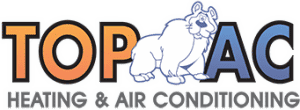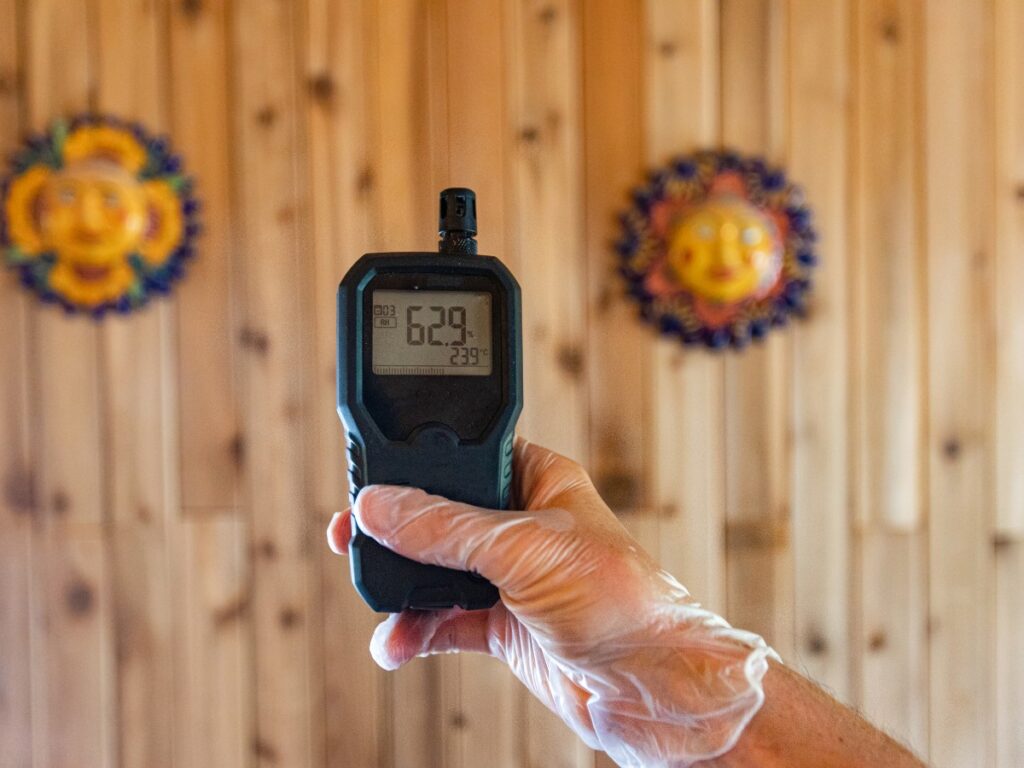The air quality we breathe is crucial for our health and well-being. Poor indoor air quality can adversely affect our respiratory system, cause allergies, and even lead to serious health issues in the long run. It’s essential to understand the importance of indoor air quality and take steps to ensure the air inside your home is safe to breathe. This blog post will guide you through the critical steps for a safer home with TOP AC Inc.
We will discuss common indoor air pollutants, how to test your home’s indoor air quality, and ways to improve it. Whether you’re looking to invest in an indoor air quality monitor or hiring professionals for testing and improvement, we’ve got you covered. Read on as we answer frequently asked questions about indoor air quality testing and help you make informed decisions about your home’s safety.
Steps to Test Indoor Air Quality at Home
Testing indoor air quality at home can be done using various methods. Home test kits are convenient for regular monitoring and provide insights into the presence of pollutants like volatile organic compounds.
These kits are crucial in testing for specific pollutants, such as radon, carbon dioxide, and different types of mold. Indoor air quality monitors also offer accurate results, ensuring a comprehensive understanding of the air composition. Seeking professional help for air testing is advisable to thoroughly assess and identify potential pollutants, safeguarding against the risk of health problems.
Investing in an Indoor Air Quality Monitor
Investing in an indoor air quality monitor allows for tracking air pollution levels. It’s essential to consider the size of your home for accurate monitoring. The air quality index provides valuable information on air quality levels. Opting for professional testing guarantees precise and reliable results. Additionally, air purifiers play a crucial role in improving home air quality.
Monitoring Carbon Monoxide Levels
Carbon monoxide detectors aid in monitoring levels and protect against the silent killer. Gas dryers can contribute to carbon monoxide levels, posing a risk of health problems. Complete home air testing includes monitoring carbon monoxide and ensuring a safe environment.
Elevated levels of carbon monoxide, a type of mold, expose residents to health risks. The good news is that professional testing can detect this risk.
Conducting a Radon Test
Regarding ensuring a safe home environment, radon exposure can be a silent but dangerous threat. New homes, in particular, should have their radon levels monitored regularly to mitigate potential health risks. Professional radon testing is crucial for accurate results, providing the necessary insights to effectively address any elevated radon levels.
The Environmental Protection Agency recommends radon testing as a necessary step for maintaining a healthy living space, and this precautionary measure can go a long way in preventing the risk of health problems associated with radon exposure.

Improving Your Home’s Indoor Air Quality
Enhancing indoor air quality starts with optimizing ventilation systems. Proper airflow prevents the buildup of volatile organic compounds and carbon dioxide.
Air purifiers are crucial in removing pollutants, and regular filter replacements ensure efficient functioning. Maintenance is vital to reducing the presence of mold, which, if undetected, can pose health risks. Additionally, managing indoor humidity levels is vital for a healthier environment. Investing in an air testing service can identify potential pollutants and provide peace of mind.
Tips to Enhance Air Ventilation
Enhancing indoor air quality can be achieved through various ventilation practices. Opening windows regularly allows for improved air circulation, reducing potential pollutants inside.
Additionally, utilizing suitable air pumps contributes to enhanced ventilation, benefiting homeowners and business owners. Implementing proper ventilation techniques can significantly reduce the risk of health problems associated with poor indoor air quality. The good news is that these simple practices can make a remarkable difference in the overall air quality within homes and commercial spaces.
The Role of Air Purifiers
Air purifiers play a crucial role in indoor air quality by effectively removing indoor air pollutants, thus significantly improving the overall air quality. This is supported by the Environmental Protection Agency’s recommendation to use air purifiers as a proactive measure to reduce health risks associated with poor indoor air quality.
These devices filter out specific pollutants, such as volatile organic compounds and pet dander, ensuring the air remains fresh and clean. Investing in air purifiers contributes to a healthier indoor environment for your family, mitigating the risk of health problems from exposure to indoor pollutants like mold spores, pet dander, and dust mites.
Regular Cleaning and Maintenance for Better Air Quality
Regular upkeep and cleaning are crucial in maintaining optimal indoor air quality. Implementing regular cleaning routines significantly improves the air you breathe, reducing the risk of health problems associated with indoor air pollution.
Routine vacuuming and dusting help eliminate particulate matter and potential pollutants, creating a healthier indoor environment. Proper HVAC system maintenance prevents mold, dust, and other contaminants buildup, ensuring cleaner air. Additionally, cleaning air vents, ducts, and filters is essential for sustaining good indoor air quality, making your home safer and healthier.
Evaluating Health Symptoms Related to Poor Air Quality
Identifying potential health issues associated with indoor air quality is crucial for safeguarding your family’s well-being. Symptoms like headaches, dizziness, or respiratory problems may indicate poor air quality.
Evaluation of these symptoms can help determine the potential presence of pollutants in your home. Understanding the signs of poor air quality is essential for maintaining a healthy indoor environment. Consulting with a healthcare professional is vital if you suspect your health issues are related to indoor air quality.
Consulting with Air Quality Professionals
When addressing concerns about indoor air quality, seeking professional advice is crucial. Consulting with air quality professionals can provide valuable insights into potential pollutants and help create a tailored plan for improvement. It ensures an accurate assessment and proactive steps to enhance air quality.
Additionally, working with experts can aid in making informed decisions, thus safeguarding your family’s well-being. It is vital to prioritize the air quality in your home for the health and well-being of your family. Poor indoor air quality can lead to various health issues and discomfort. By investing in an indoor air quality monitor, testing for mold presence, monitoring carbon monoxide levels, and conducting a radon test, you can identify and address any potential problems.
Additionally, enhancing air ventilation, using air purifiers, and regular cleaning and maintenance can improve the air quality in your home. If you or your family members experience health symptoms related to poor air quality, it is crucial to seek professional help and consult with air quality professionals. Lastly, regularly testing your home’s indoor air quality ensures a safe and healthy environment.

